As an Amazon Associate GolferHive.com earns from qualifying purchases.
Cold Weather Golf Outfits For Women That Actually Work On The Course
Does your golf season end the second the temperature drops? It’s a frustrating feeling when cold weather forces you to pack your clubs away for months.
A women’s cold weather golf outfit is a system of apparel designed for warmth without restricting your swing. The main problem is that bulky winter clothes make it impossible to play well, leaving you feeling like the Michelin Man. You just want to stay warm and play the game you love.
The key to comfortable cold weather golf is a three-layer system designed for performance. This guide will show you exactly how to build that system, piece by piece. You’ll learn how to extend your season and play comfortably from fall through early spring.
Hate When Cold Weather Ends Your Golf Season?
There’s nothing more disappointing than a beautiful, crisp autumn day that’s just too cold to enjoy on the golf course. For many of us, the golf season feels far too short. The problem is that traditional winter clothing is a golf swing’s worst enemy—it’s bulky, restrictive, and simply not designed for the athletic rotation your body needs to make. You’re left with a frustrating choice: freeze through a round or just give up until spring.
But what if you didn’t have to choose? What if you could build a golf-specific wardrobe that keeps you perfectly warm while allowing for a free, unrestricted swing? After years of testing (and freezing through) countless combinations on frosty fairways, I’ve perfected a system that works. This guide breaks down the science of layering for golf, transforming cold days from a barrier into a beautiful opportunity to have the course all to yourself. The secret weapon is a simple but powerful layering system.
The 7 Core Components of a Perfect Cold Weather Golf Outfit
A perfect cold weather golf outfit isn’t about finding one magic jacket; it’s about building a complete system from 7 essential components that work together. Each piece has a specific job: to wick, insulate, or protect. By understanding the role of each component, you can create a versatile wardrobe that keeps you warm and swinging freely in any condition. Based on extensive on-course testing, we’ll show you exactly what to look for to build a system that works from fall through early spring.
The 7 core components of a functional cold weather golf outfit are:
1. A Moisture-Wicking Base Layer
2. An Insulating Mid-Layer
3. A Weather-Proof Outer Layer
4. Flexible Thermal Pants
5. Critical Winter Golf Gloves
6. An Essential Warm Beanie
7. Game-Changing Wool Socks
1. The Moisture-Wicking Base Layer: Your Second Skin
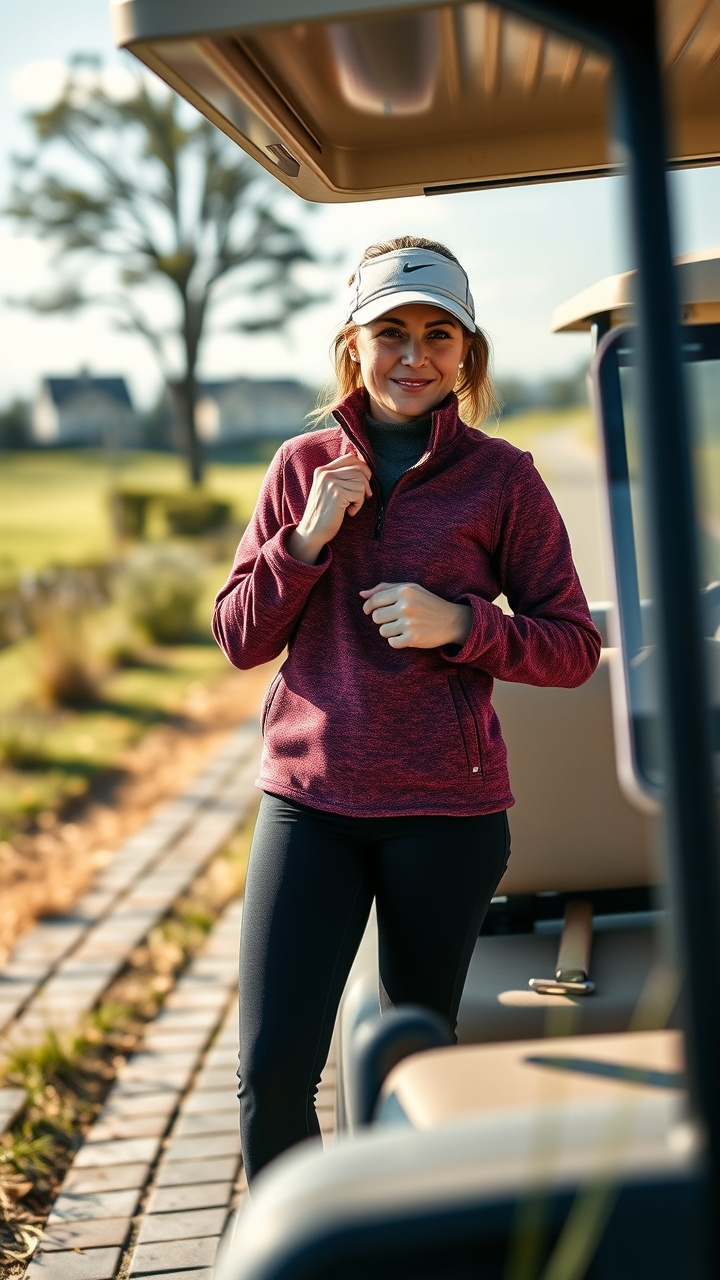
Save this essential layering tip to your ‘Golf Style’ board!
This is the most important piece of your entire outfit. Its job is not primarily to provide warmth, but to manage moisture by pulling sweat away from your skin. Staying dry is the first and most critical step to staying warm.
Key Features to Look For:
- Material: Look for either “Merino Wool” for its superior warmth-when-wet and anti-odor properties, or a “technical synthetic” like polyester/spandex blend for durability and quick-drying capabilities.
- Fit: Should be snug and athletic, like a second skin, to effectively wick moisture away. Avoid loose or baggy fits.
- Style: A mock-neck or high-crew neck provides extra warmth and often satisfies collared shirt requirements at private clubs.
- Seams: Flatlock seams prevent chafing during the repetitive motion of a golf swing.
How to Choose & Wear It:
- Choose Your Material: Pick Merino wool for very cold days or if you’re sensitive to odors. Choose a synthetic blend for all-around use and a lower price point.
- Verify the Fit: Ensure it’s fitted but doesn’t restrict your shoulder or torso rotation. You should be able to make a full practice swing without feeling any pulling.
- NEVER Wear Cotton: This is the most important rule. Cotton absorbs sweat and will make you cold and clammy, ruining the effectiveness of all other layers. Wear this as your only layer under a mid-layer or jacket.
I once wore a simple cotton long-sleeve shirt on a 50°F day. By the third hole, I was sweating from walking, and by the sixth, I was shivering because the damp cotton was chilling me to the bone. This single piece of apparel is the most important investment you’ll make.
2. The Insulating Mid-Layer: Your Personal Thermostat
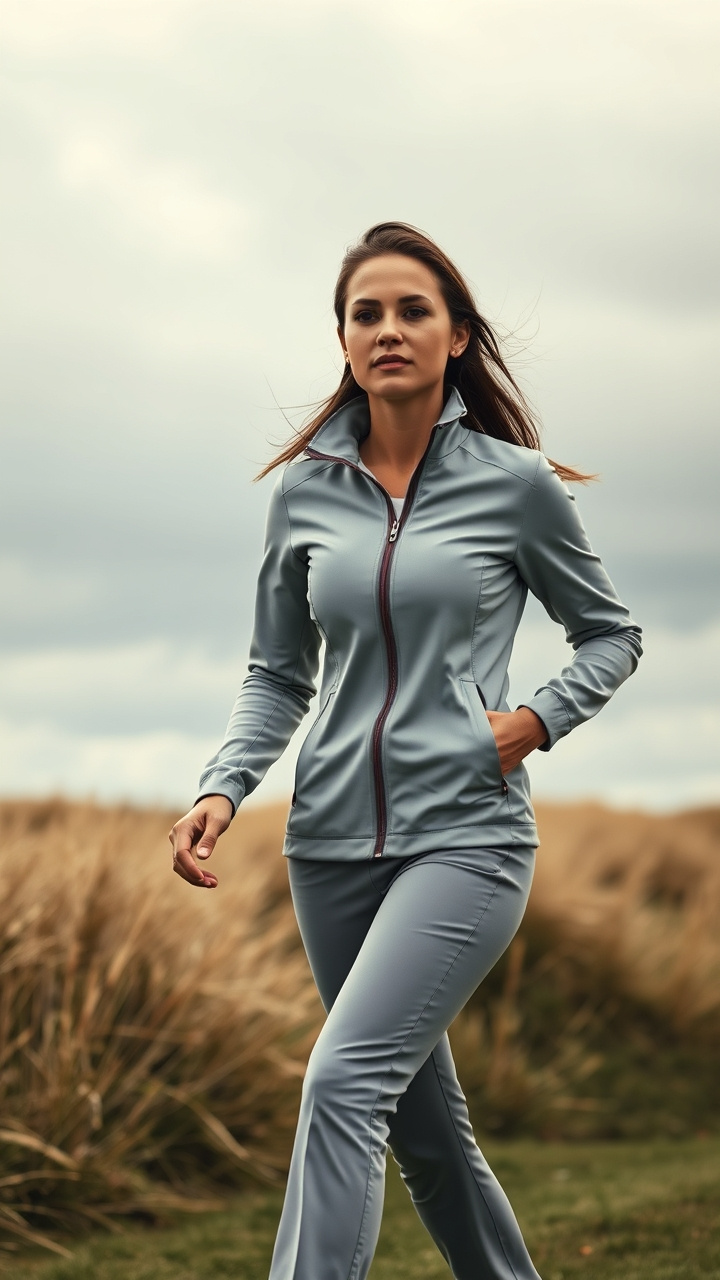
Pin this cozy and stylish golf layer idea!
The mid-layer’s job is insulation. It traps the warm air your body generates, creating a cozy barrier against the cold. This is the layer you’ll most likely take off or put on as conditions change, acting as your personal thermostat.
Key Features to Look For:
- Material: A technical fleece or a brushed-interior jersey knit offers the best warmth-to-weight ratio. Some hybrid designs feature insulated panels on the chest with stretch fabric on the sleeves.
- Style: A “quarter-zip pullover” is the classic choice, allowing for easy ventilation. A “full-zip vest” is an excellent alternative, keeping your core warm while leaving your arms completely free.
- Stretch: Look for fabric with significant “four-way stretch,” especially across the back and shoulders, to avoid any restriction at the top of your backswing.
- Pockets: Zippered pockets are a plus for stashing a ball marker or tees.
How to Choose & Wear It:
- Decide: Pullover or Vest? Choose a vest for cool, calm days (above 45°F) when arm freedom is your top priority. Opt for a long-sleeve pullover for colder days or if you tend to get cold arms.
- Check the Collar: A stand-up collar on a quarter-zip provides excellent neck warmth when fully zipped.
- Layer Correctly: This piece always goes over your base layer and under your outer jacket. It’s the layer you’ll most likely take off and put back on during the round.
A lightweight insulated vest is arguably the most versatile piece of golf apparel you can own. It’s perfect for fall, winter, and spring, and it provides that crucial core warmth without ever interfering with your arms.
3. The Weather-Proof Outer Layer: Your Shield
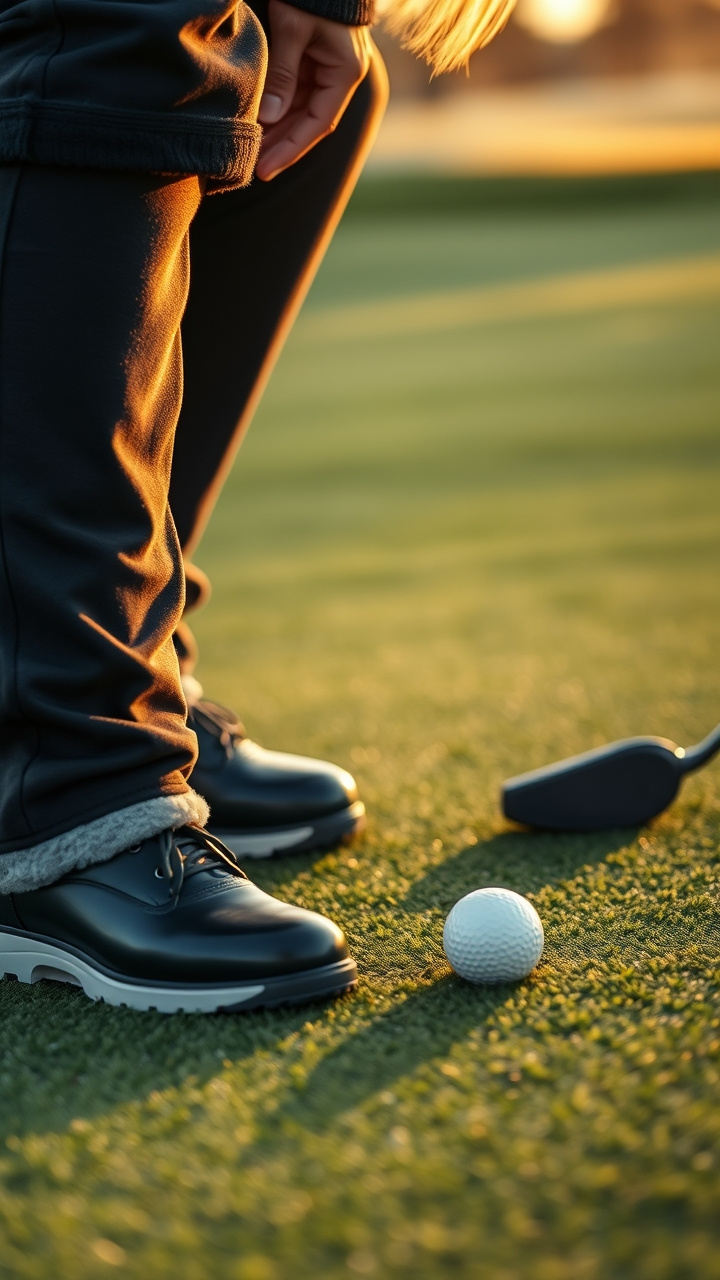
Save this for your next windy day on the course!
Your outer layer is your shield against the elements, primarily wind and rain. Its job is to protect the warm air you’ve generated with your other layers from being stripped away by the weather.
Key Features to Look For:
- Windproofing: This is the most critical feature. A jacket with a “windproof membrane” or tightly woven fabric will prevent the wind from stealing your body heat.
- Water Resistance: Look for a “DWR (Durable Water Repellent) finish” which will cause light rain and mist to bead up and roll off. For playing in steady rain, you need a fully “waterproof” jacket with taped seams.
- Quiet Fabric: Test the jacket to ensure it doesn’t make a loud ‘swishing’ sound when you move your arms, which can be distracting during your swing.
- Adjustable Cuffs & Hem: These allow you to seal out drafts and customize the fit.
How to Choose & Wear It:
- Prioritize Wind Protection: For most cold days, wind is a bigger enemy than rain. A high-quality windproof softshell jacket is the most practical choice for 90% of winter rounds.
- Test Your Swing: Before buying, put the jacket on over a mid-layer and make a full practice swing. Ensure there’s no pulling across your back or bunching in your midsection.
- Understand the Terms: “Water-resistant” handles mist and drizzle. “Waterproof” handles a downpour. Choose based on the climate you play in most often.
My first “rain jacket” for golf was a cheap, crinkly shell. Not only was it loud and distracting, but it had zero breathability. After two holes, I was wetter from sweat on the inside than I would have been from the rain. Invest in a breathable, golf-specific design.
4. The Flexible Thermal Pants: Your Foundation
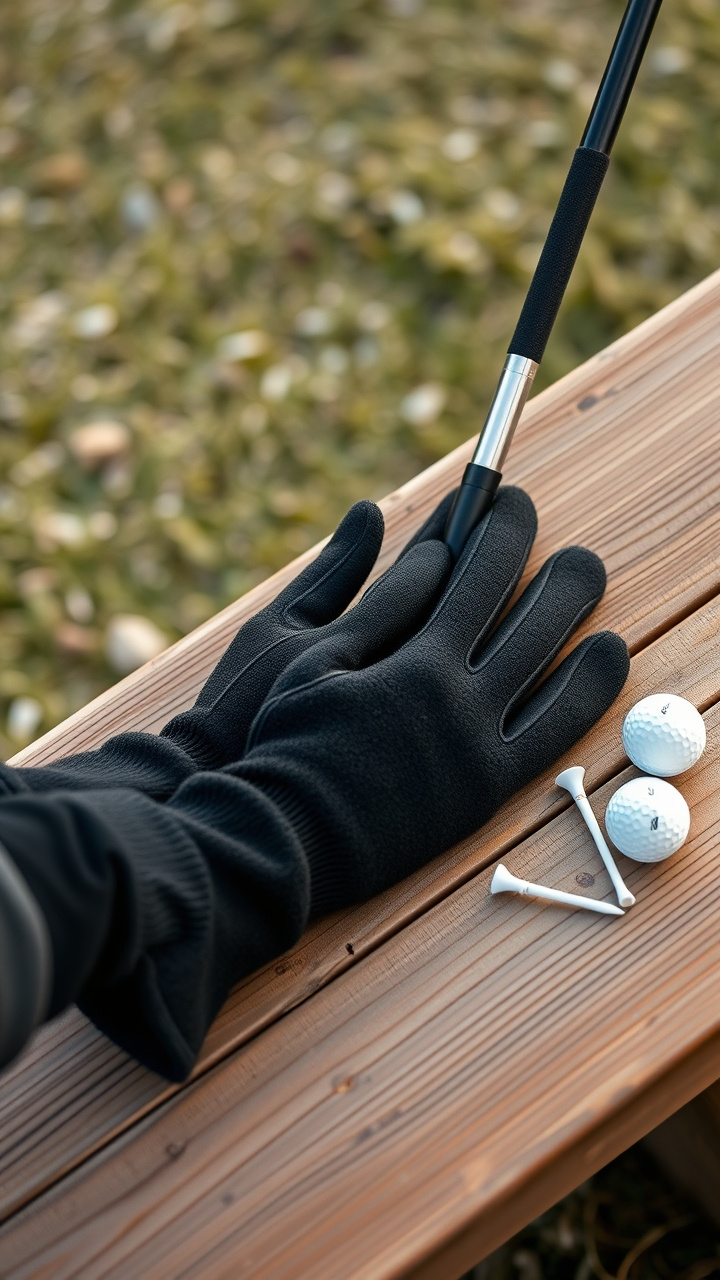
Pin this cozy solution for cold legs on the course!
Keeping your legs warm is just as important as your core. Modern thermal golf pants offer incredible warmth without the bulk, using fleece linings and technical fabrics that stretch with you as you walk the course and squat to read putts.
Key Features to Look For:
- Lining: Look for pants specifically advertised as “fleece-lined” or “brushed-back” for built-in, non-bulky insulation.
- Fabric: The outer fabric should be a polyester/spandex blend with four-way stretch to allow for squatting to read putts and rotating through your swing.
- Pockets: Ensure they have deep enough pockets for a scorecard or tees, a feature often missing from standard leggings.
- Water Resistance: Many winter golf pants have a DWR finish on the exterior to repel morning dew or light drizzle.
How to Choose & Wear It:
- Option 1: All-in-One Pants: For ultimate convenience, choose a pair of fleece-lined golf pants. This is a simple, warm, one-garment solution.
- Option 2: Layering System: For more versatility, wear thermal tights or fleece-lined leggings under your regular stretch golf pants or even a golf skirt.
- Check the Dress Code: While fleece-lined leggings are incredibly comfortable and warm, always check your club’s dress code. Wearing them under an insulated golf skirt is a stylish and often-accepted workaround.
Look for pants with a slightly higher rise in the back. This ensures your shirt stays tucked in and your lower back stays covered when you bend over to pick up your ball.
5. The Critical Winter Golf Gloves: Your Grip & Feel
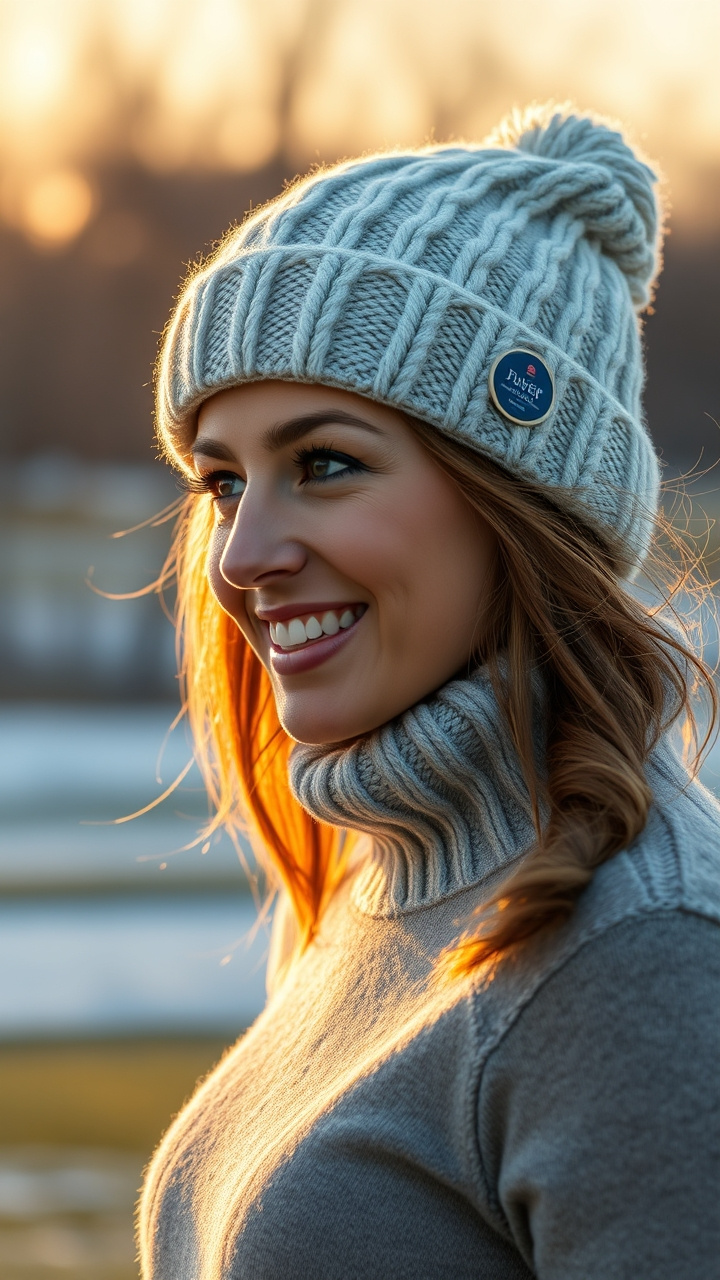
Don’t let cold hands ruin your game! Save this tip.
Cold hands lose feeling, and lost feeling means lost control of the club. Standard golf gloves offer no insulation. Winter-specific golf gloves or a good mitten strategy are non-negotiable for playing in the cold.
Key Features to Look For:
- Paired Set: Winter golf gloves are typically sold as a pair, unlike standard golf gloves.
- Grip Palm: The palm side should be made of a synthetic or cabretta leather to ensure a secure grip on the club that’s similar to a regular glove.
- Insulated Back: The back of the glove should be made from a thermal, windproof material like fleece to provide warmth.
- Cuff Length: Look for an extended, elasticized cuff that can be tucked under your jacket sleeve to seal out cold air.
How to Choose & Wear It:
- Option 1: Winter Gloves: For moderately cold days, a good pair of winter golf gloves is perfect. You can wear them for every shot without having to take them on and off.
- Option 2: Mittens + Hand Warmers: For brutally cold days, this is the pro-level solution. Wear your regular golf glove on your lead hand and keep both hands inside a pair of heavily insulated mittens between shots. Place a disposable hand warmer inside each mitten for a portable furnace.
- Fit is Key: Winter gloves should be snug. If they are too bulky, you will lose the crucial ‘feel’ of the club in your hands.
On very cold days, keep an extra golf ball in your pocket. Alternate balls between holes so you are always hitting a warmer ball, which can feel slightly softer off the clubface.
6. The Essential Warm Beanie: Stop Heat Loss
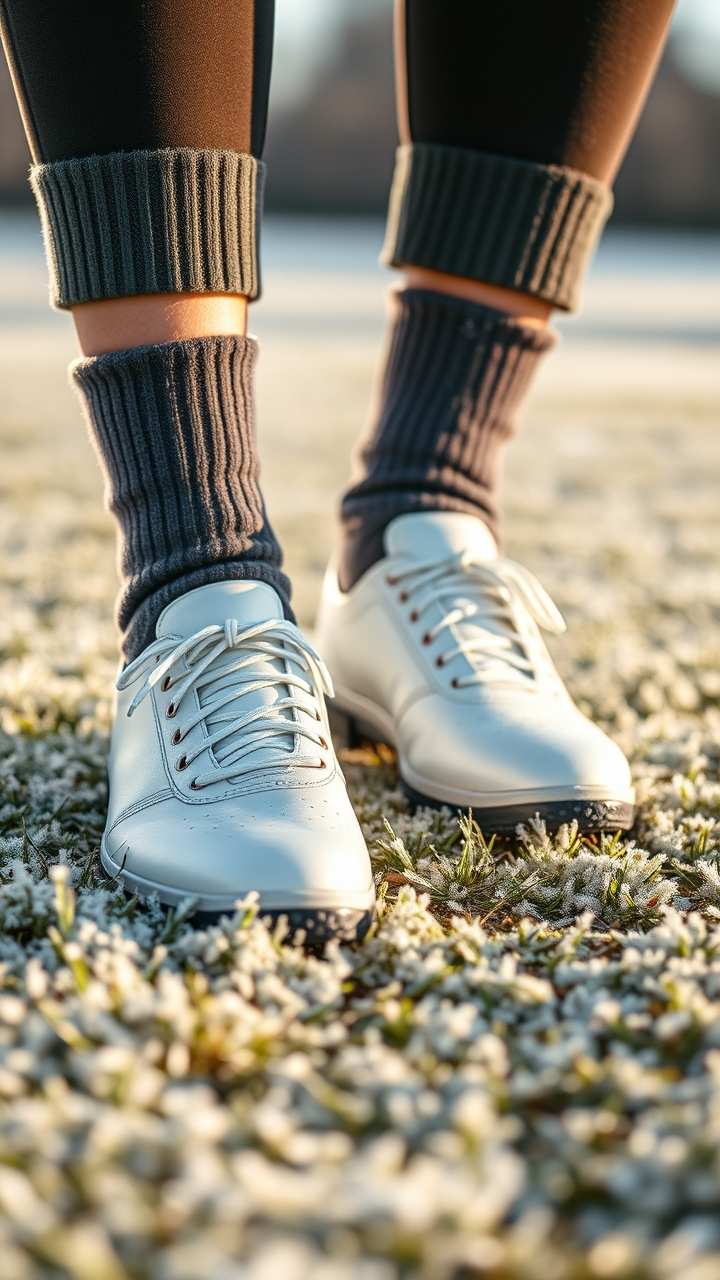
A simple but crucial accessory! Pin for later.
You lose a significant amount of body heat through your head. Wearing a warm hat is one of the simplest and most effective ways to boost your overall warmth and comfort on the course.
Key Features to Look For:
- Fleece Lining: The most effective beanies for severe cold have a soft fleece lining on the inside. This blocks wind and adds significant insulation.
- Material: A wool or acrylic knit provides warmth. Look for one that is soft and not itchy.
- Coverage: Ensure the beanie is deep enough to fully cover your ears.
- Visor Option: Some winter hats for golf incorporate a small bill or visor to help shield your eyes from low winter sun.
How to Choose & Wear It:
- Choose Your Style: A classic beanie is the warmest option. A wide, fleece-lined headband is a great alternative if you don’t like full hats but want to keep your ears warm.
- Secure Fit: Choose a beanie that fits snugly enough that it won’t be blown off by a strong gust of wind mid-swing.
- Don’t Underestimate It: You lose a significant amount of body heat through your head. Wearing a hat is one of the easiest and most effective ways to improve your overall warmth and comfort.
For years I just wore a baseball cap, thinking it was enough. The first time I wore a proper fleece-lined beanie on a 38°F day, the difference in my overall body warmth was astounding. It’s a non-negotiable piece of gear for me now.
7. The Game-Changing Wool Socks: Your Final Defense
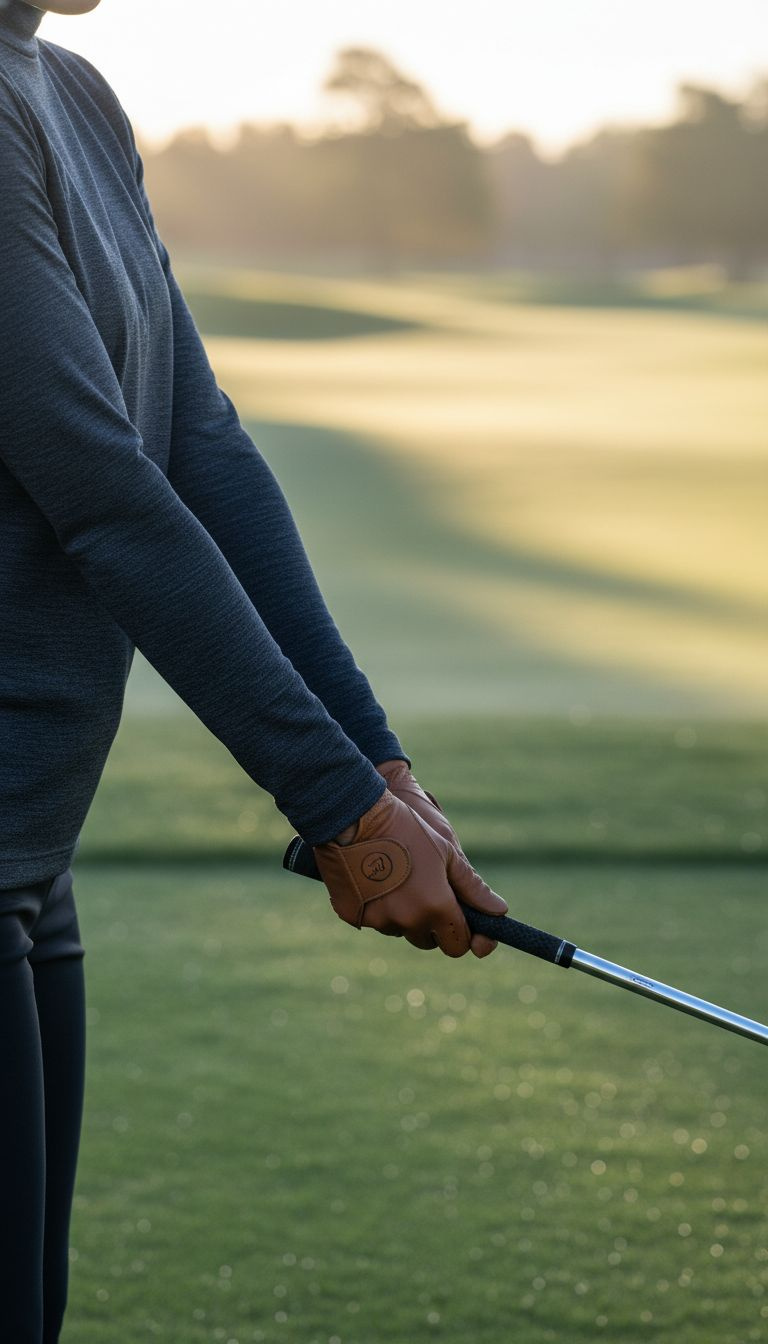
Warm feet, happy golfer! Save this essential tip.
Cold feet can make an entire round miserable. The combination of high-quality wool socks and waterproof golf shoes is your final line of defense against the cold, damp ground.
Key Features to Look For:
- Material: “Merino wool” is the undisputed champion for winter socks. It’s warm, moisture-wicking, and stays warm even if it gets damp. Avoid cotton socks at all costs.
- Cushioning: Look for medium cushioning for a good balance of warmth and comfort without being too thick to fit in your golf shoes.
- Height: Crew-length socks are ideal as they provide coverage above the ankle, preventing any cold gaps between your pants and shoes.
- Seamless Toe: A seamless toe construction prevents blisters and rubbing during the 4-5 miles you walk in a typical round.
How to Choose & Wear It:
- Pair with Waterproof Shoes: Even the best socks won’t work if your feet are wet. Ensure your golf shoes are waterproof.
- Get the Right Size: Socks that are too tight can restrict circulation and make your feet colder. Ensure a proper, comfortable fit.
- Invest in Quality: A few pairs of high-quality merino wool socks are a better investment than a dozen pairs of cheap cotton ones. They will dramatically improve your comfort on the course.
If you know the course is going to be wet, bring a spare pair of wool socks in your bag. Changing into dry socks halfway through the round is a simple luxury that can completely revitalize your game.
Key Takeaways: Your Quick Guide to Dressing for Cold Weather Golf
Here is a quick reference chart to help you build the perfect outfit based on the temperature. Remember to always check the “feels like” temperature, which accounts for wind chill.
| Temperature Range | Base Layer | Mid-Layer | Outer Layer | Accessories Essential |
|---|---|---|---|---|
| 50-60°F (10-15°C) | Long-sleeve technical polo | Lightweight quarter-zip OR a vest | Optional; pack a wind jacket | Regular golf gloves, baseball cap |
| 40-50°F (4-10°C) | Thermal mock-neck base | Fleece pullover or insulated vest | Windproof jacket | Winter gloves, beanie, wool socks |
| Below 40°F (<4°C) | Mid-weight merino wool base | Fleece pullover AND an insulated vest | Insulated/windproof jacket | Mittens, hand warmers, beanie, wool socks |
People Also Ask About Women’s Cold Weather Golf Outfits
Can women wear leggings for winter golf?
Yes, women can absolutely wear leggings for winter golf, and it’s a popular choice for comfort and warmth. To ensure you comply with course dress codes, opt for high-quality, opaque, fleece-lined leggings specifically designed for athletics. The most accepted way to wear them is layered under a golf skirt or skort, which creates a stylish and compliant look.
Is a golf vest or a jacket better for cold weather?
A vest is better for cool, calm days (around 45°F/7°C and up), while a jacket is essential for colder, windier, or wetter conditions. A vest provides excellent core warmth while offering maximum freedom of movement for your arms. A jacket provides more complete protection from the elements and is the superior choice when battling wind or cold temperatures.
What is the single most important piece of cold weather golf clothing?
The single most important piece is your base layer. A high-quality, non-cotton, moisture-wicking base layer is the foundation of your entire system. If your base layer fails by holding sweat (like cotton does), all your other expensive layers will be rendered ineffective, and you will get cold.
How do you keep your hands warm enough to play golf?
For extreme cold, the best method is to wear insulated mittens with disposable hand warmers inside. You wear your normal golf glove on your lead hand, keep both hands in the mittens between shots, and only remove your hand to hit. For less severe cold, a pair of specialized winter golf gloves that offer both grip and warmth is sufficient.
Final Thoughts
Your golf season doesn’t have to end when the temperature drops. With the right layering system, you can be just as comfortable and confident on a crisp 45-degree day as you are on a sunny 75-degree one. Think of it as a new season of golf, with quiet courses, beautiful autumn colors, and the satisfaction of knowing you’re prepared for anything. Go out there and extend your season!
What’s your number one cold-weather golf hack or favorite piece of gear? Share it in the comments below
Last update on 2025-12-06 / Affiliate links / Images from Amazon Product Advertising API

